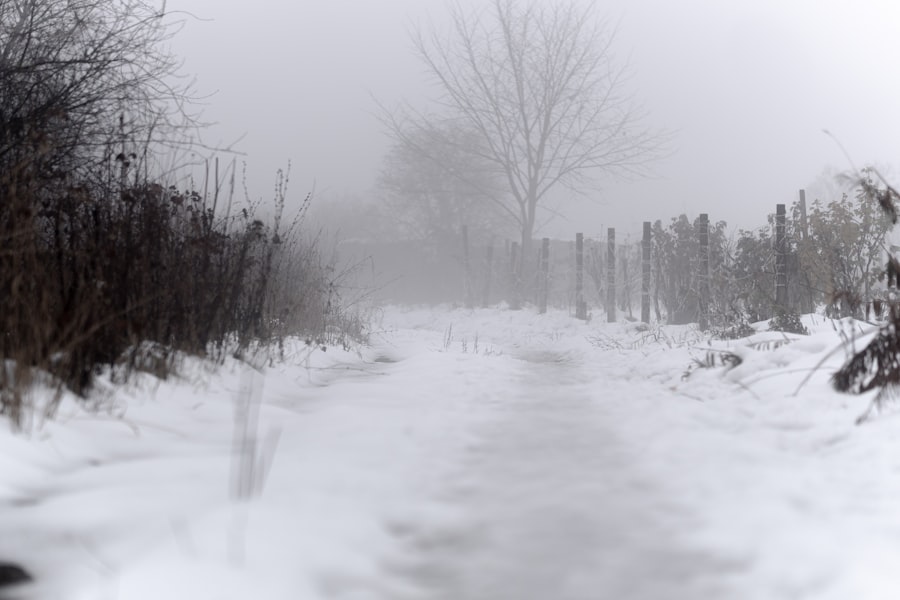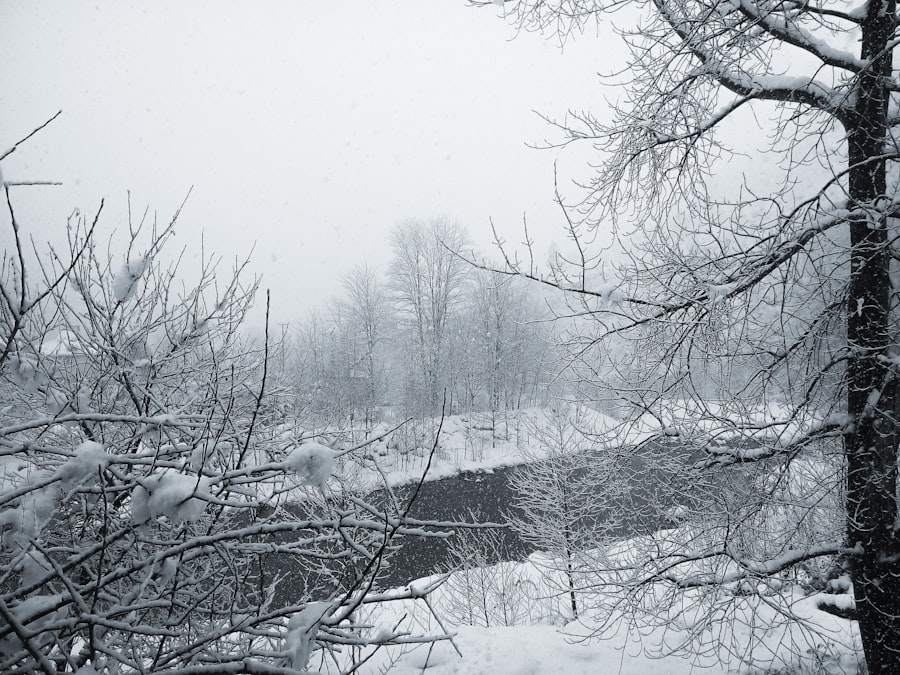The Drake Passage, a body of water located between the southern tip of South America and Antarctica, is renowned for its tumultuous seas and unpredictable weather patterns. This narrow stretch of ocean, measuring approximately 800 kilometers (500 miles) wide, serves as a critical maritime route for vessels traveling to and from the Antarctic region. Named after the English explorer Sir Francis Drake, who navigated these waters in the late 16th century, the passage has become synonymous with both adventure and peril.
Its unique geographical position makes it a vital corridor for scientific research, tourism, and commercial shipping, yet it also poses significant challenges due to its notorious conditions. Navigating the Drake Passage is not for the faint of heart. The confluence of the Atlantic and Pacific Oceans creates a dynamic environment where strong currents and fierce winds can lead to rough seas.
For those who dare to traverse this passage, understanding its complexities is essential. February, in particular, presents a unique set of weather patterns that can greatly influence navigation. As summer in the Southern Hemisphere reaches its peak, the conditions in the Drake Passage can vary dramatically, making it imperative for mariners to be well-informed and prepared.
Key Takeaways
- Drake Passage is a treacherous body of water located between South America’s Cape Horn and the South Shetland Islands of Antarctica.
- February weather patterns in Drake Passage are characterized by strong winds, high waves, and rapidly changing conditions due to the convergence of the westerly winds and the Antarctic Circumpolar Current.
- Navigating Drake Passage in February presents potential challenges such as extreme weather, icebergs, and limited visibility, making it one of the most challenging maritime routes in the world.
- Safety precautions for February weather conditions include securing all loose items, wearing appropriate cold weather gear, and ensuring the vessel is equipped with emergency communication and navigation systems.
- Tips for navigating Drake Passage in February include choosing a sturdy vessel, hiring experienced crew, and planning for longer transit times due to adverse weather conditions.
Understanding the February Weather Patterns
February marks the height of summer in the Southern Hemisphere, which brings a mix of weather phenomena to the Drake Passage. During this month, temperatures tend to be milder compared to the frigid winter months, with average sea surface temperatures hovering around 5°C (41°F). However, this apparent warmth can be misleading, as the weather can shift rapidly from calm to chaotic.
The presence of low-pressure systems often leads to strong winds and high waves, creating a challenging environment for vessels attempting to cross. In addition to wind and wave conditions, February also sees increased precipitation in the form of rain and snow. These weather patterns can lead to reduced visibility, complicating navigation further.
Mariners must remain vigilant and adaptable, as sudden storms can arise without warning. Understanding these weather dynamics is crucial for anyone planning a journey through the Drake Passage during this time of year. By keeping abreast of meteorological forecasts and being aware of potential changes in conditions, sailors can better prepare for the challenges that lie ahead.
Potential Challenges for Navigating Drake Passage in February

The challenges of navigating the Drake Passage in February are multifaceted. One of the most significant concerns is the unpredictable nature of the weather. While some days may offer relatively calm seas, others can present towering waves and fierce winds that can reach speeds of up to 60 knots.
Such conditions not only make sailing treacherous but can also lead to equipment failure or accidents if vessels are not adequately prepared. Another challenge lies in the presence of icebergs and sea ice during this time of year. Although February typically sees less ice than the winter months, there remains a risk of encountering floating ice, particularly near the Antarctic Peninsula.
This poses a serious hazard for vessels, as collisions with ice can cause catastrophic damage. Mariners must exercise caution and maintain a vigilant watch for any signs of ice while navigating through these waters.
Safety Precautions for February Weather Conditions
| Weather Condition | Safety Precautions |
|---|---|
| Snow | Use snow tires, drive slowly, and keep a safe distance from other vehicles. |
| Ice | Use salt or sand on walkways, drive with caution, and avoid sudden movements. |
| Low Temperatures | Dress in layers, cover exposed skin, and limit time outdoors. |
| Strong Winds | Secure loose objects, stay away from windows, and be cautious when driving. |
Given the potential dangers associated with navigating the Drake Passage in February, implementing safety precautions is paramount. First and foremost, mariners should ensure that their vessels are equipped with reliable navigation systems and communication devices. GPS technology and radar can provide critical information about surrounding conditions and help identify potential hazards such as icebergs or other vessels.
Additionally, it is essential for crews to conduct thorough safety drills before embarking on their journey. Familiarizing all personnel with emergency procedures can make a significant difference in crisis situations. Life jackets, lifeboats, and other safety equipment should be readily accessible and in good working order.
Furthermore, maintaining a well-stocked first aid kit is crucial for addressing any medical emergencies that may arise during the crossing.
Tips for Navigating Drake Passage in February
Successfully navigating the Drake Passage in February requires careful planning and execution. One key tip is to monitor weather forecasts closely before and during the journey. Utilizing reliable meteorological services can provide valuable insights into upcoming weather patterns, allowing mariners to make informed decisions about when to set sail or alter their course.
Departing during periods of predicted calm weather can significantly enhance safety and comfort during the crossing. Mariners should also be prepared for sudden changes in conditions by having contingency plans in place.
This may include identifying safe harbors along the route where vessels can seek refuge if necessary.
Importance of Proper Planning and Preparation

Proper planning and preparation are critical components of a successful crossing through the Drake Passage in February. Before setting out, mariners should conduct a comprehensive assessment of their vessel’s capabilities and limitations. This includes evaluating fuel reserves, equipment functionality, and crew readiness.
Ensuring that all systems are operational can prevent potential issues from arising during the journey. Moreover, creating a detailed itinerary that accounts for potential delays or detours is essential. This plan should include alternative routes and safe havens where vessels can anchor if conditions become too severe.
By anticipating challenges and preparing accordingly, mariners can navigate the Drake Passage with greater confidence and safety.
Equipment and Gear Recommendations for February Passage
When preparing for a crossing through the Drake Passage in February, selecting appropriate equipment and gear is vital for ensuring safety and comfort. Mariners should invest in high-quality life jackets that are designed for rough seas, as well as sturdy harnesses that can secure crew members during turbulent conditions. Additionally, waterproof clothing is essential for keeping warm and dry amidst rain or spray from waves.
Navigation tools such as compasses, charts, and electronic devices should be regularly checked for accuracy and functionality. It is also advisable to carry extra batteries and backup systems in case primary devices fail. Furthermore, having a reliable means of communication—such as satellite phones or VHF radios—can facilitate coordination with other vessels or maritime authorities during emergencies.
Alternative Routes and Strategies for February Crossings
While the Drake Passage is often considered the most direct route to Antarctica, alternative paths may be worth exploring depending on weather conditions and vessel capabilities. One such option is to navigate around Cape Horn, which offers a more sheltered passage but may add significant travel time to the journey. This route can provide respite from harsh winds and waves typically encountered in the Drake Passage.
Another strategy involves utilizing icebreaker vessels that are specifically designed to navigate through icy waters safely. These ships can create channels through sea ice, allowing other vessels to follow in their wake. By considering alternative routes or employing specialized vessels when necessary, mariners can enhance their chances of successfully crossing during challenging February conditions.
Communication and Coordination with Maritime Authorities
Effective communication with maritime authorities is crucial when navigating the Drake Passage in February. Mariners should establish contact with local coast guards or harbor masters before departure to obtain updated information on weather conditions and any potential hazards along their route. This collaboration can provide valuable insights that may not be readily available through standard forecasting services.
Additionally, maintaining open lines of communication during the journey is essential for ensuring safety. Regularly reporting position updates and any changes in conditions can help authorities monitor vessel movements and respond quickly if assistance is needed. By fostering strong relationships with maritime authorities, mariners can enhance their overall safety while traversing this challenging passage.
Case Studies of Successful February Crossings
Examining case studies of successful crossings through the Drake Passage in February can provide valuable lessons for future mariners.
By choosing a window of favorable conditions, they were able to complete their crossing with minimal disruptions despite encountering some rough seas along the way.
Another case study highlights a group of adventurers who opted for an icebreaker-assisted crossing during particularly challenging weather conditions. By collaborating with an experienced icebreaker crew, they were able to navigate safely through areas with significant ice presence while benefiting from expert guidance on managing rough seas. These examples underscore the importance of preparation, adaptability, and collaboration when navigating the unpredictable waters of the Drake Passage.
Navigating Drake Passage in February
Navigating the Drake Passage in February presents both opportunities and challenges for mariners seeking adventure or scientific exploration in Antarctica. Understanding the unique weather patterns characteristic of this time of year is essential for ensuring safety while traversing these tumultuous waters. By implementing proper planning, utilizing appropriate equipment, and maintaining effective communication with maritime authorities, sailors can enhance their chances of successfully completing their journey.
Ultimately, those who venture into the Drake Passage must respect its power while embracing its beauty. With careful preparation and an awareness of potential challenges, mariners can navigate this iconic passage with confidence—transforming what could be a daunting experience into an unforgettable adventure on one of nature’s most remarkable stages.
In February, the weather conditions in the Drake Passage can be particularly challenging for sailors and adventurers alike, as this narrow body of water between the southern tip of South America and Antarctica is notorious for its unpredictable and often harsh weather. For those interested in learning more about navigating such treacherous waters, a related article on MyGeoQuest provides valuable insights into the unique challenges and experiences faced by those who brave the Drake Passage during this time of year. This resource offers a deeper understanding of the meteorological phenomena that contribute to the passage’s reputation and how to prepare for a journey through one of the world’s most formidable maritime routes.
WATCH NOW! Drake Passage: Earth’s Deadliest Waters Revealed
FAQs
What is the weather like in the Drake Passage in February?
In February, the weather in the Drake Passage can be quite unpredictable. It is characterized by strong winds, rough seas, and cold temperatures. The average temperature ranges from 0°C to 5°C (32°F to 41°F), and there is a high chance of encountering storms and heavy swells.
Is it safe to travel through the Drake Passage in February?
Traveling through the Drake Passage in February can be challenging due to the harsh weather conditions. It is important to be prepared for rough seas and strong winds. Travelers are advised to consult with experienced expedition leaders and captains before embarking on a journey through the Drake Passage in February.
What should I pack for a trip through the Drake Passage in February?
When traveling through the Drake Passage in February, it is essential to pack warm and waterproof clothing, including insulated jackets, gloves, hats, and sturdy footwear. It is also recommended to bring motion sickness medication and any necessary personal medications.
Are there any wildlife sightings in the Drake Passage in February?
February is a great time for wildlife sightings in the Drake Passage. Travelers may have the opportunity to see various species of seabirds, including albatrosses and petrels, as well as whales and other marine mammals. It is important to keep a lookout for wildlife while navigating through the passage.
